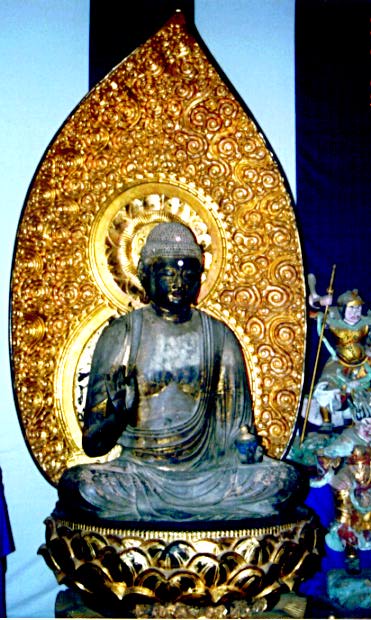

| Yakushi, the healing Buddha, was widely revered in early Japanese Buddhism. The Yakushi cult attracted many followers in later ages as well, and was particularly popular in the Aizu region in the Heian and Kamakura periods. This wooden image of Yakushi dates from the early Kamakura period, and can be found at Chūzenji in Kitakata. (Photograph courtesy of Mr. Tabe Yoshio.) |
Go back to previous section.
 Go on to next section.
Go on to next section.
Return to menu page.